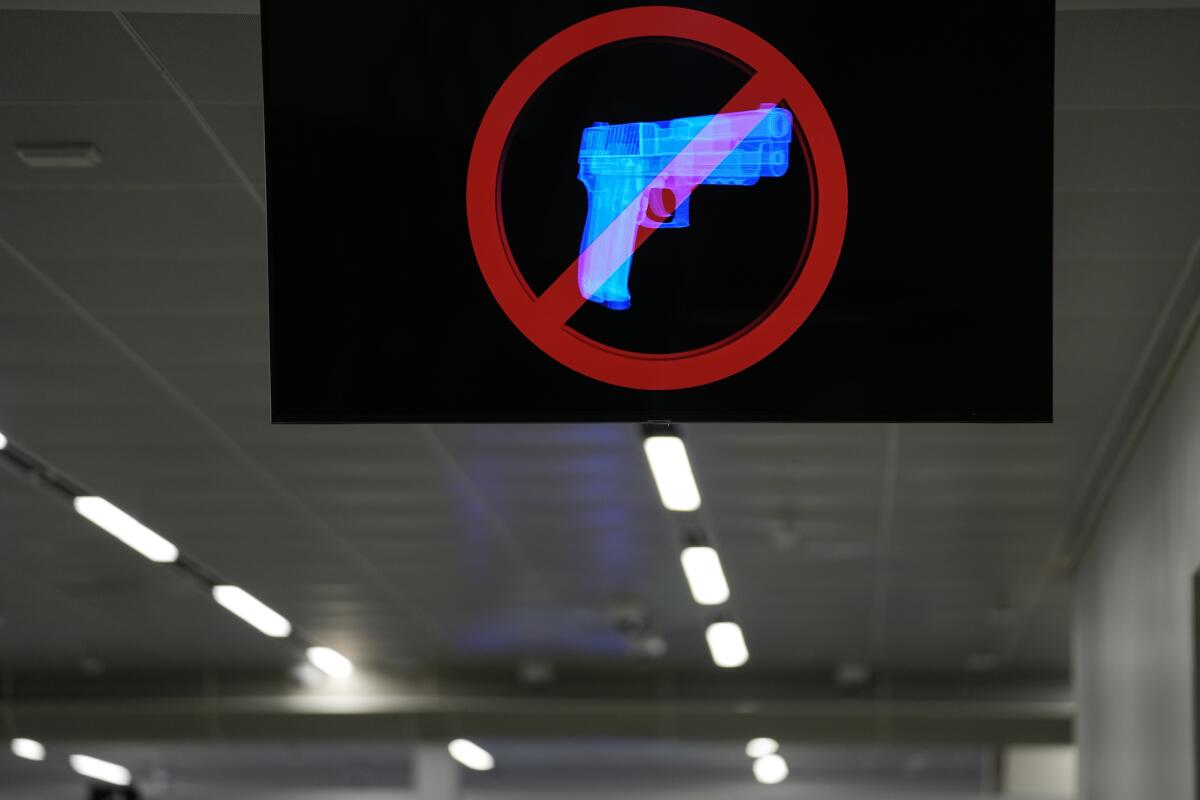Opinion: By keeping guns away from domestic abusers, the justices set an example for other courts

The Supreme Court’s ruling on Friday finally brought common sense to analyzing gun rights under the 2nd Amendment. It will save lives.
In United States vs. Rahimi, the court in an 8-1 decision upheld the constitutionality of a federal law that makes it a crime for a person under a restraining order in a domestic violence case to have a firearm.
The only explanation for the Supreme Court’s 6-3 bump stock decision is that the ultraconservative majority supports gun rights virtually without question.
The court’s holding should be noncontroversial: A person can be prohibited from having a gun “once a court has found that [the individual] represents a credible threat to the physical safety of another.” But the implications of this decision are enormous in allowing essential regulation of firearms in the United States.
To put Friday’s decision in context, from 1791 until 2008, the Supreme Court never once invalidated any federal, state or local gun regulation. In the handful of decisions about the 2nd Amendment, the court always said that the amendment meant what it says: Americans have a right to have guns for militia service.
We should be thankful that the ultraconservative Supreme Court unanimously dismissed an antiabortion case that never should have gotten that far in the first place.
But in 2008, in District of Columbia vs. Heller, the court dramatically changed course. In a 5-4 decision, the justices said that the 2nd Amendment protects a right to have handguns in the home for the sake of security.
The court did not return to examining the scope of gun rights for 14 years, until 2022 and New York State Rifle and Pistol Assn. vs. Bruen. In an opinion by Justice Clarence Thomas, the court said that the 2nd Amendment protects a right to have guns outside the home, that the amendment is an “unqualified right” and that gun regulations are constitutional only if they were permissible historically. Thomas suggested that this meant gun laws now had to be of the same type that existed in 1791, when the 2nd Amendment was ratified.
Bruen has led to challenges to every type of gun regulation in the country, causing much confusion in the lower courts. Based on Bruen, the U. S. Court of Appeals for the 5th Circuit declared unconstitutional the federal statute banning gun possession for domestic abusers. The conservative 5th Circuit justices followed Thomas’ reasoning: Because such restrictions on possessing guns did not exist in 1791, they are unconstitutional today.
On Friday, the Supreme Court wisely reversed the 5th Circuit. Chief Justice John G. Roberts Jr. wrote for the majority, and only Thomas dissented. The court declared: “When a restraining order contains a finding that an individual poses a credible threat to the physical safety of an intimate partner, that individual may — consistent with the Second Amendment — be banned from possessing firearms while the order is in effect. Since the founding, our Nation’s firearm laws have included provisions preventing individuals who threaten physical harm to others from misusing firearms.”
Upholding this law is, in itself, important. Keeping those under restraining orders in domestic violence cases from having guns will save many lives, especially women’s lives. The Educational Fund to Stop Gun Violence reports that a woman “is five times more likely to be murdered when her abuser has access to a gun.”
The court’s decision is significant, too, in making it much more likely that many other gun regulations will be allowed. Roberts’ majority opinion rejects the view that gun regulations are constitutional only if they are of a type that existed in 1791. He wrote: “Nevertheless, some courts have misunderstood the methodology of our recent 2nd Amendment cases. These precedents were not meant to suggest a law trapped in amber.”
Other conservative justices wrote separately to indicate that the meaning of the 2nd Amendment was not fixed in 1791. Justice Brett Kavanaugh said: “The Court interprets and applies the Constitution by examining text, pre-ratification and post-ratification history, and precedent.” This rejects the originalist view that nothing matters except the original intent behind a constitutional provision.
The Rahimi decision will affect many pending challenges to gun regulations. For example, there is a federal law, and there are laws in almost every state, that prohibit convicted felons from having guns. Hundreds of challenges to these laws have been mounted in the last two years, and lower courts are split as to whether the regulations violate the 2nd Amendment. Now there is a strong basis for upholding them.
There is no doubt that the current conservative majority of the court is supportive of gun rights, as reflected in last week’s decision striking down a federal regulation that outlawed bump stocks, devices that allow a rifle to function like a machine gun. That makes the decision in Rahimi especially important. The 8-1 verdict emphatically upholds the government’s power to regulate guns to protect safety and save innocent lives.
Erwin Chemerinsky is a contributing writer to Opinion and dean of the UC Berkeley School of Law.
More to Read
A cure for the common opinion
Get thought-provoking perspectives with our weekly newsletter.
You may occasionally receive promotional content from the Los Angeles Times.












